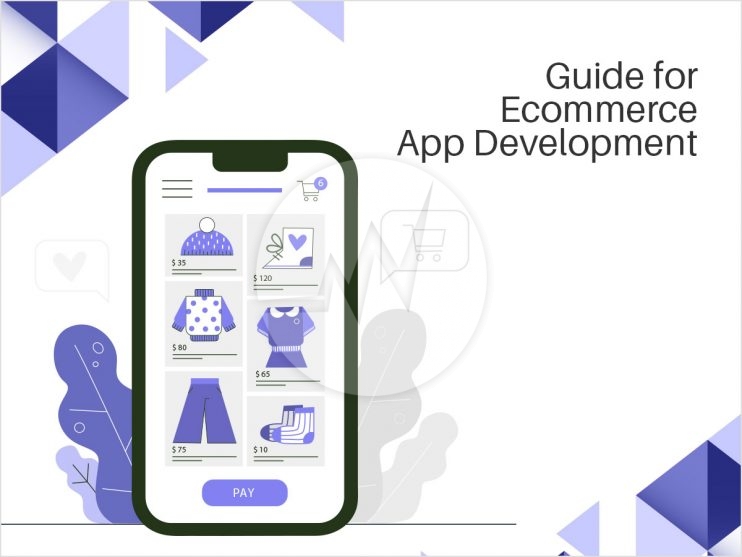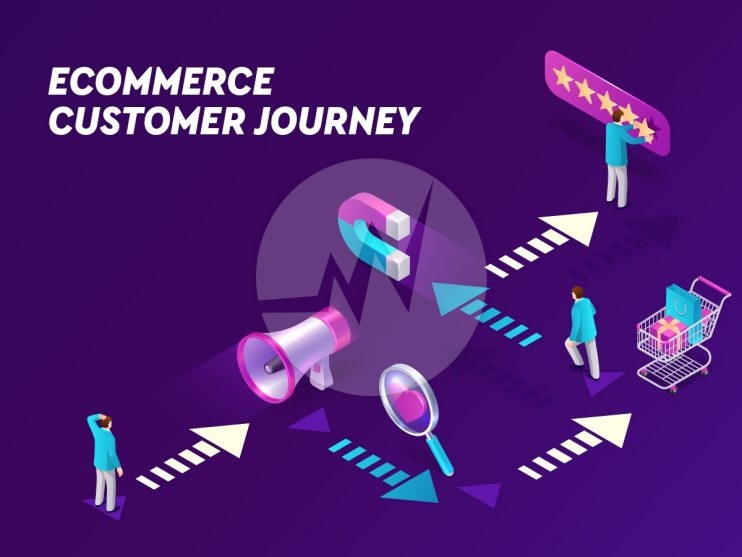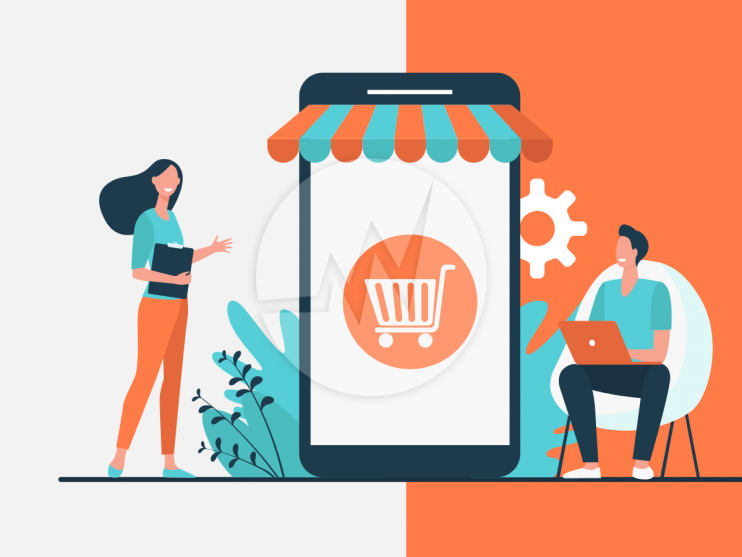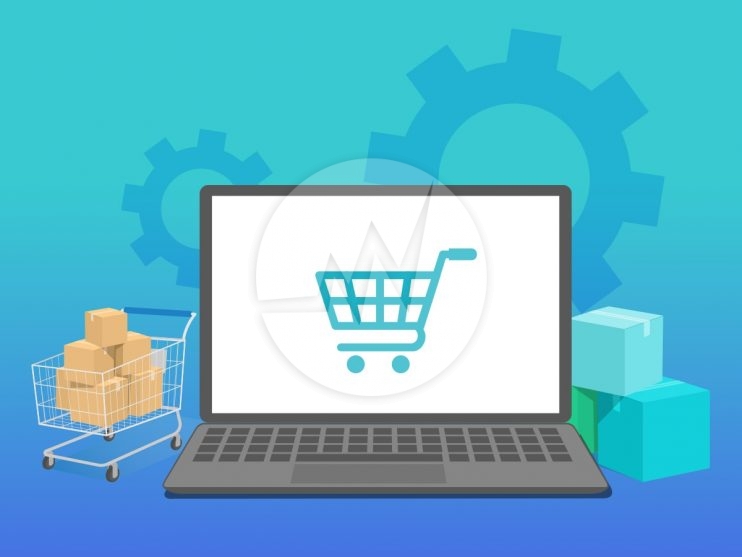A handy guide for ecommerce app development!

Do you have an ecommerce app? Have you ever wondered how an ecommerce mobile app will be your path to business success?
The online business requires optimum visibility to reach its targeted audience and the ecommerce apps are the mediums to reach every customer’s touchpoint. Ecommerce mobile apps are the key sources to sell your products these days. These apps are the crucial revenue-generating elements for an organization.
Large-scaled businesses or start-ups, every business ought to have ecommerce apps to run the business smoothly. We all use some or other apps in our day-to-day life. Thus, we know the importance of these apps and how important they are for a business in terms of sales and profits.
So, how do you create an ecommerce app? When you know these apps are critical for your business, you must own the best app for an error-less business operation.
There is not a set definition of ‘best.’ Everybody has their own set of ‘best’ things. Therefore, your ‘best’ is something that can achieve your intended business goals. And to create the ‘best’ app for your business, you should follow some practical steps.
Keep perusing the article to know how to develop an effective ecommerce app.
YOU MAY ALSO LIKE: Best Ecommerce CMS
Ecommerce app development – Importance and types
Ecommerce is important because modern end-users (customers) want or prefer this type of shopping experience due to several reasons like ease of use, time saving, multiple options, etc. It has become a lifestyle now to shop online for any and every small or large requirement. Fashion, groceries, gadgets, appliances, you name anything, and ecommerce store has that product or service. If an ecommerce store is unable to provide you with your asked product, it will lose a sale.
The ecommerce apps cover a large area of services with opportunities to reach out to a significant number of users. An organization can utilize different marketing methods to boost sales via ecommerce apps. Moreover, these apps help streamline supply chain management objectives by optimum utilization of the available resources and increasing ROI.
Ecommerce apps provide a next-level customer experience and when you have more satisfied customers, you are on the path to success.
There are some distinct types of ecommerce apps based on the different business models. Every business has its versatile requirement; accordingly, ecommerce app development happens. Since the ecommerce app development has a vast scope to expand, you should choose carefully which type of ecommerce app your business requires.
D2C: The direct-to-customer (D2C) is the ecommerce app model, where a brand or organization sells its product or service directly to its customers. No third-party retailers are involved in this type of app. Even customers prefer to buy the products and services directly from the brand for its reliability.
Multivendor: This type of ecommerce app is one of the most popular and significantly increasing in demand. Here many businesses can sell their products and services from a single platform, listing themselves as a vendor on that platform. Multivendor marketplaces are increasing like anything because of their robust, secure, and scalable features.
These two types of apps are either built in-house or the organization hires some development partners to create the apps for them. Yet, there is one more way to develop an app and that is white label development.
White label ecommerce app development is where an organization escapes the time-consuming and expensive app development process and buys an app from a white label ecommerce development company. These agencies have readymade apps with some scope of customization as per the client’s requirements.
Factors that influence an ecommerce app development
An ecommerce app development depends on a few crucial factors that are to consider before you start the real-time execution. The work starts when you feel the need for an app followed by considering the other facets like customers, products, market, etc.
Customers
This is the most crucial factor for any business. You must know who your customers are, what is their expectation from your app, and what problems they’ve faced earlier with other stores or traditional business models. When you start knowing your customers, you analyze the challenges and conceptualize your ecommerce app accordingly. Gather as much customer data as you can because it helps in creating an app that becomes your users’ favourite.
Your strength
Before the app development begins, contemplate your strengths and weaknesses. Brainstorm what is your expectation from the ecommerce app. What are your business vision and goals (short-term and long-term)? Think over it because your strengths are the reasons you will be able to drive more traffic to your ecommerce app. Additionally, try to overcome your weaknesses and if possible, convert them into strengths. If you can utilize your strengths properly, it will make your app sustainable.
Marketing strategy
A business needs properly defined strategies to run its ecommerce app smoothly. Your marketing strategies decide how and when you will reach the customers and how long customers will use your app. These strategies directly impact sales and conversions. You have ample tools and plenty of methodologies to create and improve marketing strategies for an ecommerce app.
Use of social media
Social media is great exposure for every ecommerce business. The social media platforms give additional tools to create brand awareness and help ecommerce apps to build a customer base via these platforms.
Ecommerce apps can be integrated with social media accounts for direct marketing campaigns and outreaching more customers. Also, social media assists in engaging customers with your brand. The interaction between you and your users becomes easy which increases the conversion rate.
Every facet alignment
When an ecommerce app comes into existence, it deals with many business facets at one time, such as end-users, vendors, partners, staff, etc. Thus, you must consider aligning these factors in a way that they won’t create a hindrance in the operations of ecommerce apps. Moreover, the app should be flexible enough to handle the versatility of your business.
After brainstorming on all the above and other crucial factors you must have one efficient platform to build your ecommerce app. The market is flooded with myriad software, but you should choose one which is best suitable for your business. Names of some of the best platforms are Magento, Shopify, BigCommerce, Squarespace, WooCommerce, etc.
Features that an ecommerce app must have
The market is flooded with umpteen apps, out of which, many of them will be having the same product niche as yours. So how will you reach your target audience and survive in the market? The only way out is to stuff your ecommerce app with useful and attractive features and if they are unique, nothing like it.
Let’s see what essential features an app should have.
Cross-channel availability
If your business goal is to reach a larger segment and make your brand popular faster, then your ecommerce app should be available across the channels. Make sure the app’s complete availability on not only the web but on Android and iOS platforms as well.
Interactive UI
The first impression is the last impression and how your app will leave its first impression on your users? Yes, via its user interface. The interface of the app ought to be minimalist, user-friendly, and easy to navigate to offer an untroubled user experience.
Handy cart
The ecommerce apps contain a cart for users to add their products. It allows users to choose as many products as they want before they checkout. But if an app doesn’t have a cart or a properly functional cart system, then it will lose potential customers.
Lightweight
If your ecommerce app is heavy-weighted and its speed has issues, don’t expect traffic on the app. Nobody will waste time on any slow-speed app. Thus, focus on optimizing the app to ensure its blazing fast speed.
Simple navigation
Complex navigation can be a major issue behind less conversion rate. Try to make the app navigation simple by providing drop-down menus, pop-ups, buttons, or other easy interactive tools.
Offers
Offers and discounts hold your users to your app, and they keep exploring your ecommerce app. It is one of the appealing ideas to clutch your users tightly and increase the revenue of the business.
Now you know what features you should include in an ecommerce app, what factors can influence the app development, and you have a list of platforms to choose from to create your ecommerce app. But do you know, how to develop an ecommerce app? We shall discuss the steps and you will be good to start.
Steps to develop an ecommerce app
To create an efficient and competitive ecommerce app, you must consider utilizing every available resource. Here are some simple steps to develop a systematic and thriving app.
Decide which type of app model your business niche requires. It may be a single-store app or multi-vendor. But choose carefully!
Analyse what features your app needs. Whatever features you include, categorize them as per their user-friendliness, complexity, and advancement.
Create a wireframe or prototype of the application as per the model and features. So that you have a clear picture of the app and designers & developers can carve the work plan and transform it into reality.
Choose the technology for backend and frontend development.
Focus on design, development, and API integrations. Design should be intriguing yet simple and modern. All the third-party integrations must be done right, such as payment APIs, product APIs, cart APIs, etc. Developers should keep in mind the business goals and requirements of developing the app.
After development, testing is essential to avoid errors and ensure flawless functioning of the ecommerce app.
And finally, launch the app and witness the users’ reaction.
Wrapping up
Whenever your customer makes a mistake while using your ecommerce app, it is because of the issues on the app. It might be a navigation problem or complexity of the app, or they cannot find what they are looking for. Therefore, build an ecommerce app, which is accessible and available easily to everyone. The right approach will hit the right chord and the aftermath will be pleasant for an organization!
If you are looking for ecommerce support services, ecommerce store management, online store maintenance, shopping cart maintenance, ecommerce store maintenance, please explore our ecommerce maintenance and support services! Do you need further support in setting up your ecommerce store? We are here for you! If you are looking for an ecommerce website development, or shopping cart development, please explore our ecommerce solutions!






